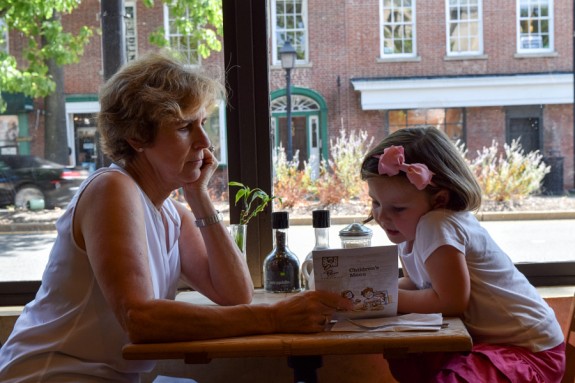No one can argue the importance of family. Whether loving or trying, our relationships with parents, children, and siblings – or the lack of such relationships – can have a huge impact on our lives. The same goes for literary characters. Their beliefs about family can be challenged, reshaped, or reaffirmed as a result of their journeys through the story.
Today’s edition of Theme: A Story’s Soul delves into family as a literary theme. We’ll use examples from books of two different genres, then compare the dynamics and patterns we find and brainstorm how we can explore the concept of family in our own work.
Examples of Family in Alice Sebold’s The Lovely Bones (Literary Fiction)
 In The Lovely Bones, 14-year-old Susie Salmon watches from heaven as the people she loves try to move on after her brutal murder. While she peeks in on her closest friends and her killer, Susie spends most of the book watching her family.
In The Lovely Bones, 14-year-old Susie Salmon watches from heaven as the people she loves try to move on after her brutal murder. While she peeks in on her closest friends and her killer, Susie spends most of the book watching her family.
Most of the Salmon family grows closer after Susie’s death. Her mother Abigail, however, withdraws from them by having an affair. As a result, Susie realizes that Abigail has never been happy with motherhood and family life. She had recalled evidence of Abigail’s dissatisfaction earlier in the story (“My mother’s eyes were oceans, and inside them there was loss” (43)). But here, Susie finally sees the big picture thanks to her many memories of Abigail: “[A]part from her children my mother could reclaim [my father’s] love, but with them she began to drift. It was my father who grew toward us as the years went by; it was my mother who grew away.” (153)
Susie’s death also teaches her younger sister Lindsey to be accountable to her parents. After the Salmon parents separate eight years later, Lindsey and her boyfriend Samuel run home after seeking shelter during a rainstorm. When they arrive, her father Jack is relieved to see they’re safe. Lindsey and Samuel respond accordingly:
“We didn’t want anyone to worry,” Lindsey said.
“Lindsey didn’t want you [Mr. Salmon] to worry, specifically.” (244)
This excerpt, as well as Lindsey’s conversation with Samuel two pages earlier, shows Lindsey’s awareness of Jack’s emotional fragility. She, the daughter, is just as concerned about her father’s wellbeing as he is about hers. Her willingness to take on such a mature role in the wake of Susie’s death reveals how deeply she values her family.
Examples of Family in Michelle Moran’s Rebel Queen (Historical Fiction)
 Rebel Queen is a fictional account of Sita Bhosale’s life as a member of the Durga Dal, the female guards protecting Rani (Queen) Lakshmibai before Britain’s conquest of India in the 1850s. Sita’s primary motivation for joining the guards, however, isn’t wealth or recognition. Instead, it’s the chance to ensure a better life for her younger sister Anuja.
Rebel Queen is a fictional account of Sita Bhosale’s life as a member of the Durga Dal, the female guards protecting Rani (Queen) Lakshmibai before Britain’s conquest of India in the 1850s. Sita’s primary motivation for joining the guards, however, isn’t wealth or recognition. Instead, it’s the chance to ensure a better life for her younger sister Anuja.
In the story, Indian custom stresses that a bride’s family must present a dowry fortune to her husband. With a widowed father and no brothers, Sita’s family can’t afford sufficient dowries for both Sita and Anuja. As a result, their father encourages Sita to train for the Durga Dal to help pay for Anuja’s wedding. This concept of duty reappears throughout Sita’s youth, often as verbal reminders from relatives and her trainer (“‘Who will support this family when your father is too old to work?’” (52)).
Eventually the idea ingrains itself in Sita’s conscious. In a letter she writes to Anuja after her joining the Durga Dal, Sita demonstrates that her sister’s future is not a mere interest, but her priority:
…. I miss you so much, Anu. But every week I am earning money, and soon – very soon – there will be a dowry fortune for you. Then our dreams of seeing you as a wife and a mother will come to pass. (132)
Keys to Exploring Family as a Theme
Relationships, relationships, relationships – that alone is the key to illuminating family as a literary theme. Both The Lovely Bones and Rebel Queen rely on character interactions within the central families drive the concept home:
- Interpersonal Conflict: Both the Salmon and Bhosale families struggle to remain united during their respective stories. Susie’s parents and siblings argue, drift apart, and reconcile numerous times; while Sita’s grandmother frequently voices her disapproval of Sita’s training.
- Responsibility: As demonstrated in both sets of excerpts, a story’s circumstances can cause characters to question their duties to the family (Abigail and motherhood in The Lovely Bones) or willingly assume new roles (Lindsey in The Lovely Bones, Sita in Rebel Queen).
- “Mirror” Families: Offering glimpses into other families’ lives allows the main characters – and readers – a different perspective on the theme. Susie often watches over the family of her first love Ray Singh and compares them to her own. Sita, on the other hand, contrasts the warmth of her trainer’s family and Rani Lakshmi’s distrust of hers to her own situation.
- Major Life Events: Marriage, births, and other milestones are excellent opportunities for highlighting the theme of family. Anuja’s wedding is one of Rebel Queen’s highlights, while The Lovely Bones features Lindsey’s engagement to Samuel.
- Familial Love: Despite the hardships and tension, both families make the effort to show affection and understanding. The Salmons spend a lot of time together, pursuing mutual hobbies and caring for one another during health crises. As for Sita, she never resents Anuja despite the sacrifices she’s made for her. In fact, both sisters grow closer because of Sita’s aspirations to become a durgavasi.
Every literary family is different, which means there are myriad ways of examining family as a theme. How you’ll explore it will depend on your story’s external conflict and the protagonist’s character arc. These building blocks will have a profound effect on the dynamics of your protagonist’s family, and can change your protagonist’s view on family by the end.
It’s Your Turn!
- What stories have you read that explore the theme of family? How do the authors accomplish this?
- Have you written a story featuring a family? How does each member relate to one another? Do any hardships or conflicts occur in your story that challenge these relationships?
- Think about your own family’s dynamics. How close or distant are you from your parents, children, or siblings? Why did you think each case has happened?
What are some topics you’d like to see featured at Theme: A Story’s Soul? Share your thoughts by commenting below or tweeting me at @SaraL_Writer with the hashtag #AStorysSoul.
…………….
 Sara Letourneau is a Massachusetts-based writer who practices joy and versatility in her work. In addition to writing a fantasy novel, she reviews tea at A Bibliophile’s Reverie and is a guest contributor for Grub Street Daily. She’s also a published poet whose works have appeared in The Curry Arts Journal, Soul-Lit, The Eunoia Review, Underground Voices, and two anthologies. Learn more about Sara at her personal blog, Facebook, and Twitter.
Sara Letourneau is a Massachusetts-based writer who practices joy and versatility in her work. In addition to writing a fantasy novel, she reviews tea at A Bibliophile’s Reverie and is a guest contributor for Grub Street Daily. She’s also a published poet whose works have appeared in The Curry Arts Journal, Soul-Lit, The Eunoia Review, Underground Voices, and two anthologies. Learn more about Sara at her personal blog, Facebook, and Twitter.







